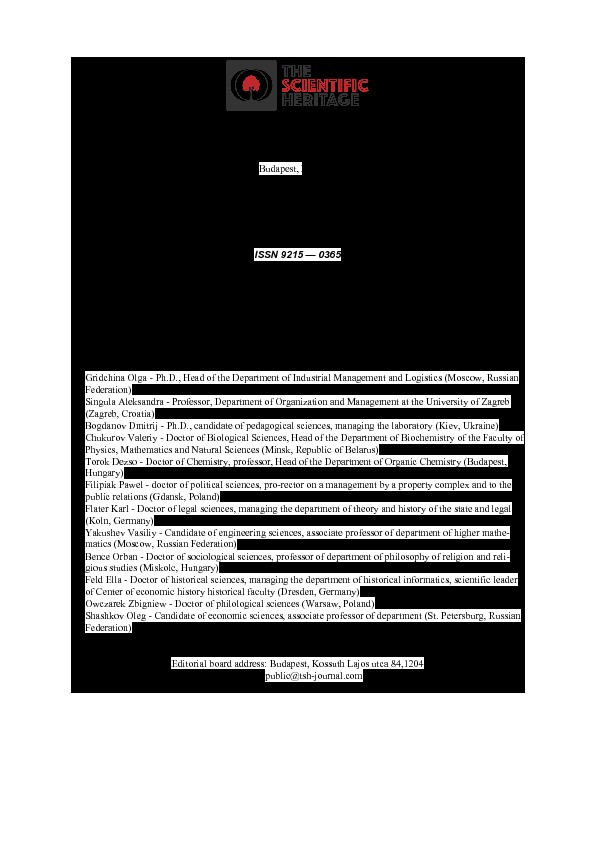id: 27175
Назва: Ecological and toxicological assessment of pesticides used to protect agricultural crops
Автори: Yakovets L.
Ключові слова: pesticides, ecological and toxicological assessment, agricultural crops, organochlorine pesticides, soil, agrocenosis
Дата публікації: 2020-12-03 08:34:57
Останні зміни: 2020-12-03 08:34:57
Рік видання: 2020
Аннотація: The article presents materials on the ecotoxicological assessment of pesticides that are used to protect crops. The aim of the research was to establish an ecotoxicological assessment of pesticides that are used to protect crops. The studies were carried out in the conditions of intensive chemicalization of agriculture in the forest-steppe of the right bank. It has been established that persistent organochlorine pesticides are one of the most common toxicants of the soil environment. The ecological and toxicological assessment of pesticides is taken into account by the variability of their distribution in the environment. The degree of negative impact of pesticides for humans and their habitats under specific conditions of use is determined by the presence of their residues and their effect on the quality of the crop. Pesticides are chemical compounds that inhibit the development of a certain group of plants or other harmful organisms. Pesticides entering agrophytocenoses accumulate in separate objects and environments and are included in various migration chains. This is especially true for persistent pesticides that can persist in the environment for a long time. The results of the research established that fungicides alto-super 330, tilt 250, when used against winter wheat diseases in the forest-steppe of the right bank, actively decomposed in the ears rather than in the stems. The intensity of decomposition of herbicides – esthe, puma-super 100, exactly and esterone in plants of spring wheat, barley and soil has been studied. Herbicide from the group of aryloxyalkanecarboxylic acids aesthetic, at consumption rates of 0.4; 0.6 l/ha degraded slowly in the stems and ears of spring wheat. During the harvesting period, no residual amounts were found in grain and soil. When testing herbicides on spring barley crops at low doses of microquantities of drugs on the 30th day after treatment, there was esthete, within 0.78-1.20 mg/kg, esterone – 0.98-1.56 mg/kg, exactly – 0.032-0.022 mg/kg, respectively. It has been established that the intensity of degradation of herbicides from the class of benzoic acid derivatives
aesthetic, esterone and sulfonylurea derivatives depends exactly on the type of crop, for example, in spring barley for a longer period than in spring wheat under the same climatic conditions.
URI: http://socrates.vsau.org/repository/getfile.php/27175.pdf
Тип виданя: Статті у зарубіжних наукових фахових виданнях (Copernicus та інші)
Видавництво: The scientific heritage. Hungary : Budapest, 2020. № 55 (55), vol. 3. P. 18-23.
Розташовується в колекціях :
Ким внесений: Адміністратор
Файл : 27175.pdf Розмір : 845439 байт Формат : Adobe PDF Доступ : Загально доступний

| |
|
|